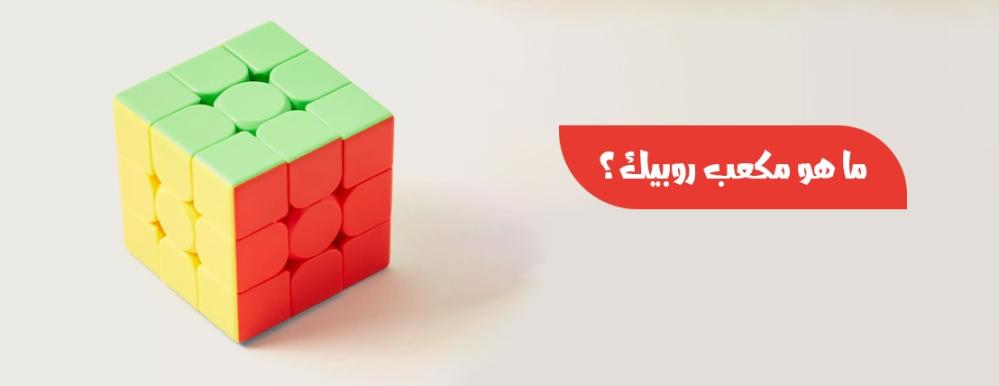
What is the Rubik’s Cube and Why Should Children Learn It? (Your Complete Guide 2025)
In an era dominated by screens and video games, it has become essential to find smart and enjoyable activities that stimulate children’s minds and develop their skills.
Among all educational games and mental challenges, the Rubik’s Cube stands out as one of the simplest yet most ingenious tools for enhancing children’s mental and logical abilities.
So, what exactly is the Rubik’s Cube? Why is learning it a skill worth investing in? And how can your child begin their journey into this colorful and fascinating world?
In this article, we’ll answer all these questions in a simple and engaging way, and take you on a journey through the hidden benefits and amazing skills your child can gain from this small but powerful cube!
🧠 First: What is the Rubik’s Cube and Why is it Called That?
The Rubik’s Cube is a three-dimensional puzzle invented in 1974 by Hungarian architect Ernő Rubik.
The traditional cube consists of 6 faces, each containing 9 smaller squares of the same color. When the cube’s colors are scrambled, the player must rearrange each face so that it displays only one color.
It was named after its inventor, and soon became one of the world’s best-selling puzzles, with over 450 million cubes sold worldwide!
🎯 Why Should Children Learn the Rubik’s Cube? 10 Key Reasons
- 💡 Develops Logical Thinking and Analytical Skills
- Solving the Rubik’s Cube doesn’t rely on luck—it requires specific strategies and step-by-step analysis.
- Children learn to think logically and make decisions based on expected outcomes.
- 🧘♂️ Improves Focus and Patience
- One of the first skills children gain from the cube is patience, persistence, and attention to detail.
- A child who was easily distracted becomes more focused and willing to spend time tackling challenges.
- 🧠 Enhances Short- and Long-term Memory
- While learning to solve the cube, children strengthen both visual and muscle memory.
- They begin remembering movements and algorithms, boosting overall cognitive ability.
- ⏱️ Speeds Up Mental Processing
- With practice, children solve the cube faster.
- This speed transfers to problem-solving in daily life as well.
- 🚀 Increases IQ
- Research shows that mentally demanding activities like the Rubik’s Cube can help increase IQ and improve academic performance.
- 🎯 Teaches Planning and Organization Skills
- To solve the puzzle, a child must plan their moves and understand the impact of each step.
- They learn that careful decisions lead to success.
- 🔄 Encourages Resilience and Learning from Failure
- A child will fail many times, but learns that failure is a normal step toward success—a golden life lesson.
- 🤹 Develops Fine Motor Skills
- Quick, controlled finger movements improve fine motor skills, helping with writing, drawing, and other manual activities.
- 👨👩👧👦 Enhances Social Interaction
- Children share solutions, practice together, and even compete in Rubik’s Cube contests, creating an intelligent and collaborative community.
- 🏆 Opens the Door to International Competitions
- Yes—there are world championships for solving the Rubik’s Cube!
- Children can join local or international competitions and become skilled in this exciting field.
🤔 FAQs About the Rubik’s Cube for Kids
Can any child learn the Rubik’s Cube?
Yes! Even children as young as 6 can learn the basics. The earlier they start, the easier and more effective the learning process will be.
How long does it take to learn?
It depends on age and commitment, but on average:
- 1–3 weeks to learn the basic steps
- 1–3 months to master faster algorithms
Are there courses for kids?
Yes! Professional courses—both online and in-person—teach children how to solve the cube and award participation certificates.
Some specialized centers, such as Gen Alpha, offer innovative STEM-based learning programs.
Which cube should a beginner start with?
It’s best to start with a 3×3 original cube of good quality. Avoid advanced cubes (4×4, 5×5) until the basics are mastered.
✨ Example Training Program: Rubik’s Cube Course for Kids (Gen Alpha)
- Sessions: 8 training sessions
- Duration: 1.5 hours per session
- Age group: 7–14 years old
- Format: Online or in-person
- Certificate: Accredited by the global STEM organization
- Includes:
- Basic movement principles
- Understanding core algorithms
- Speed-solving techniques
- Final contests and motivational prizes
📌 Tips for Parents: How to Encourage Your Child to Learn the Rubik’s Cube
- Start with them—show that you’re interested.
- Share motivational videos of kids solving the cube.
- Offer small rewards and challenges for progress.
- Enroll them in a proper training course.
- Encourage them to share their skills with friends.
📚 The Rubik’s Cube in Education: More than Just a Toy!
Did you know that some schools now include the Rubik’s Cube in classroom activities?
It’s considered a powerful educational tool that builds 21st-century skills such as:
- Critical thinking
- Problem-solving
- Teamwork
- Self-learning
🏁 Conclusion: A Small Cube… with a World of Benefits
The Rubik’s Cube may seem like a simple, colorful puzzle, but it’s actually a school of intelligence, patience, and creativity.
Through it, your child can grow, develop new skills, and embrace exciting challenges.
Don’t miss the chance to introduce them to this world—start with a small cube and watch its big impact on their life.

